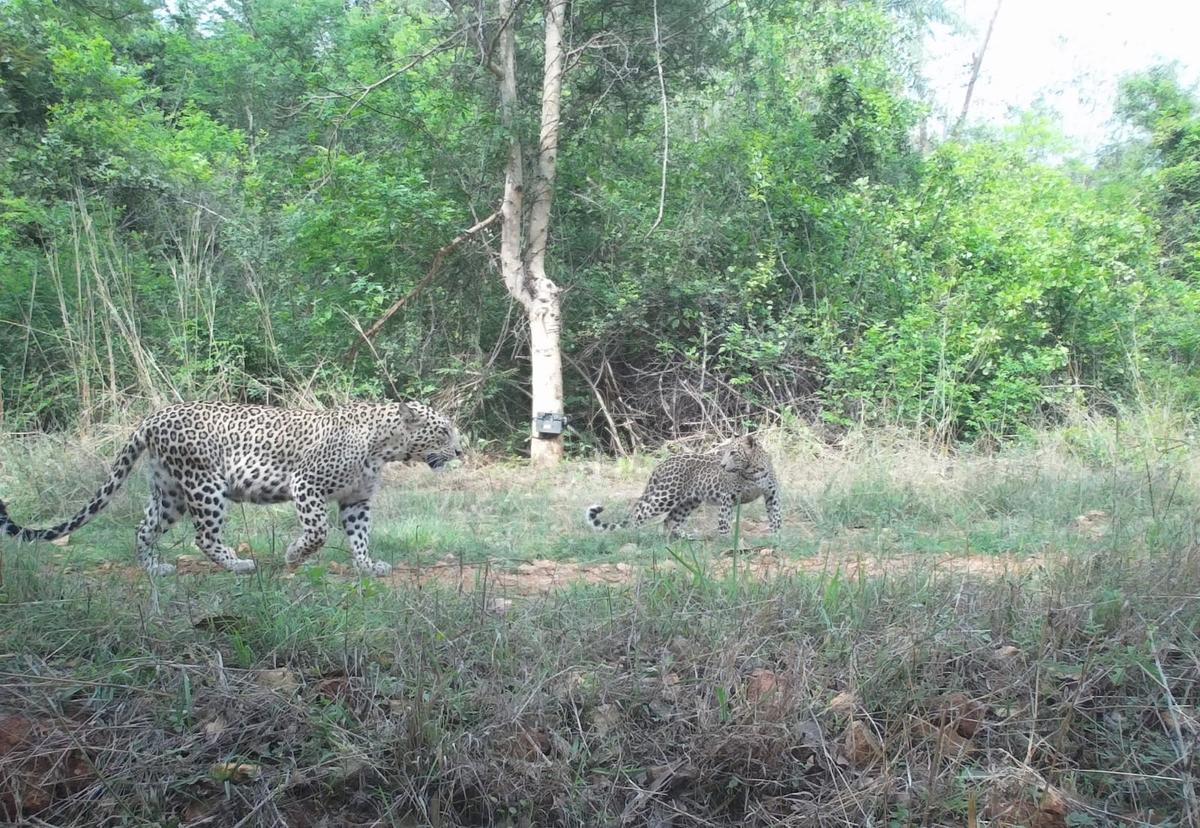
Bengaluru beat Mumbai to become a large metropolis with the highest known number of free-ranging big cats.
| Photo Credit: Special arrangement
A year-long camera-trap survey by Holématthi Nature Foundation (HNF), led by conservation biologist Dr. Sanjay Gubbi, has revealed that the forests and scrublands fringing Bengaluru harbour an estimated 80–85 wild leopards.
With this, Bengaluru now surpasses Mumbai’s documented population of around 54 leopards and becomes the large metropolis with the highest known number of free-ranging big cats, according to a statement by the Foundation.
It is also the only metro whose fringes still support an ensemble of tigers, leopards, dholes, elephants, gaur, sambar and other large mammals.
Watch: Is Bengaluru seeing more leopards?
Study across mixed habitats
The survey spotted 54 individuals inside Bannerghatta National Park (BNP) and around 30 of them roaming reserved, deemed and private forests scattered across the metropolitan periphery.
The team deployed more than 250 camera traps across 282 sqkm of mixed habitat — Turahalli, Turahalli Gudda, B.M. Kaval, U.M. Kaval, Roerich Estate, Gollahalli Gudda, Sulikere, Hesaraghatta, Marasandra, Manduru and adjoining government and private lands — as well as throughout BNP.
Besides leopards, 34 mammal species were photo-captured, four of them Endangered and four Near Threatened on the IUCN Red List.
“Twenty two species fall under Schedule I and five under Schedule II of India’s Wildlife (Protection) Act 1972 — underscoring the national and global importance of safeguarding Bengaluru’s remaining natural habitat,” said the statement.

Leopard abundance inside Bannerghatta National Park (BNP) has climbed steadily — from 40 in 2019, 47 in 2020 to 54 in 2025.
| Photo Credit:
Special arrangement
Rising numbers
Leopard abundance inside BNP has climbed steadily — from 40 in 2019, 47 in 2020 to 54 in 2025. HNF attributed the increase primarily to stricter protection that has improved prey availability, though the past translocation of conflict leopards from other districts may also have contributed. It also credited the people co-existing with leopards and other large wildlife.
Dr. Gubbi was joined by Shravan Suthar, Sandesh Appu Naik, Poornesha H.C., Mayur Mirashi, Aishwarya Karanth and field assistants from local communities.

Recommendations
The team recommended notifying B.M. Kaval, U.M. Kaval, Roerich Estate and Gollahalli Gudda as a Conservation Reserve and adding Durgadakal RF, Bettahalliwade RF (Block B) and the deemed forests of J.I. Bachahalli and M. Maniyambal to Bannerghatta National Park, where camera traps even photographed tigers.
The other recommendations included safeguarding the Muneshwarabetta–Bannerghatta wildlife corridor through appropriate conservation measures, intensifying community outreach so that Bengaluru’s rapidly expanding suburbs can coexist safely with leopards, halting further translocation of leopards into BNP and addressing root causes of human-leopard conflict at the source sites.
Published – June 05, 2025 05:38 pm IST